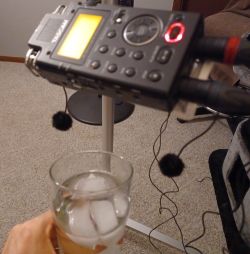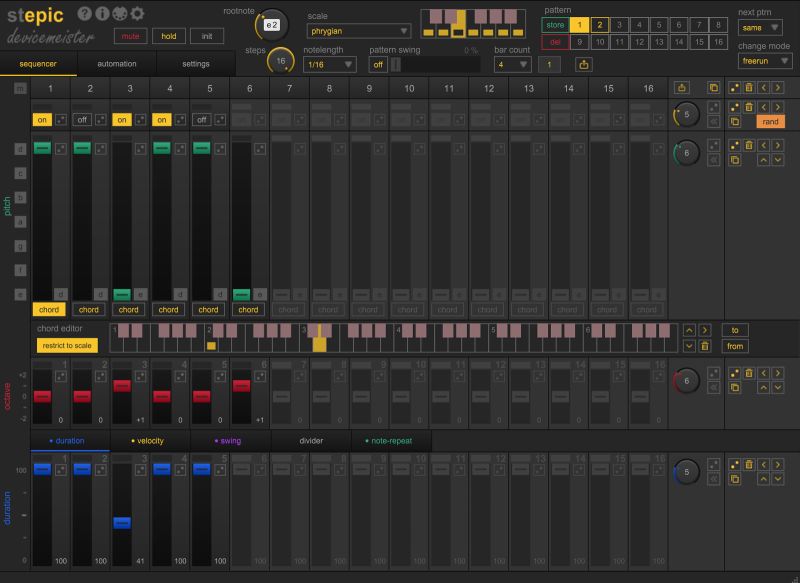I recently joined an online project by Marc Weidenbaum a.k.a. Disquiet on Mastondon. Basically, Marc drops an email once a week with a musical or audio assignment to be completed in 4 days. Things like "use one of these previously created drum loops" or, in the case of this post, "create a track using ice clanking in a glass".
The 4 days mentioned above run from Friday to Monday. I started my composition on Sunday morning by bringing a few glasses, water and a small tub of ice to a quiet room. The rules did not stipulate whether or not one could use multiple glasses of water.

I clipped a pair of LOM mikroUši microphones to an iPad stand and recorded about 5 minutes of pouring and clanking, being sure to capture some sustained tones from the glasses that I could loop and pitch to scale in a sampler.
Here's part of that recording:
In Bitwig I chopped up a dozen or so parts that had interesting variations and tones to make a sort of marimba sound.
I used a set of ringing glass samples that ended up being 34 cents shy of a C#. In the sampler I could layer them so that each would or would not play back based on the velocity of the note playing, with cross fading in between.

The next big help for this song came from the Stepic VST plugin I recently acquired. It emulates the way a hardware 16-step sequencer works plus much much more. I used it to trigger patterns, playing marimba like tones and what ended up sounding like tablas. With Stepic, I shortened a rhythmic gate pattern to just 5 beats, while notes used a pattern of 6 beats - with all of this being repeated every 16 steps. This created a poly-rhythmic sequence that had a 5/4 or 10/4 feel. Maybe a drummer can tell me.
Then tonally, I constrained notes to the phrygian mode with a root note of E2. I started with my own note ideas but quickly got lost in the endless variations Stepic can suggest and found something I liked much better. I think the sound of the water glass based notes had a nice warble from the liquid moving about in them. Something that takes work to tease out of a synthesizer, but got for free here.

The last prominent sound idea for the track were the drones that start, continue though and finish things out.
Again with the help of Bitwig's sampler I bounced a chord that fit the key of the song and resampled it. I then used the sampler's textures mode, which is basically granular synthesis. Using voice stacking, multiple voices will play back simultaneously per single note triggered but with varied values applied to any modulations you send to an instrument's parameters (things like this are why I adore Bitwig). In this case, I sent an LFO to the playback location of each of the 3 voice's sampler play heads. In this way, with 3 voices stacked, the LFO is actually 3 different LFOs in different phases all playing different parts of the sample. This results in a satisfying drone ;)

The remaining sounds were simpler percussive elements that took the place of where high hats and percussion might be in more traditional music. Their patterns were composed in audio clips filled with short samples of clicks and clinks.
Below is the final result:
